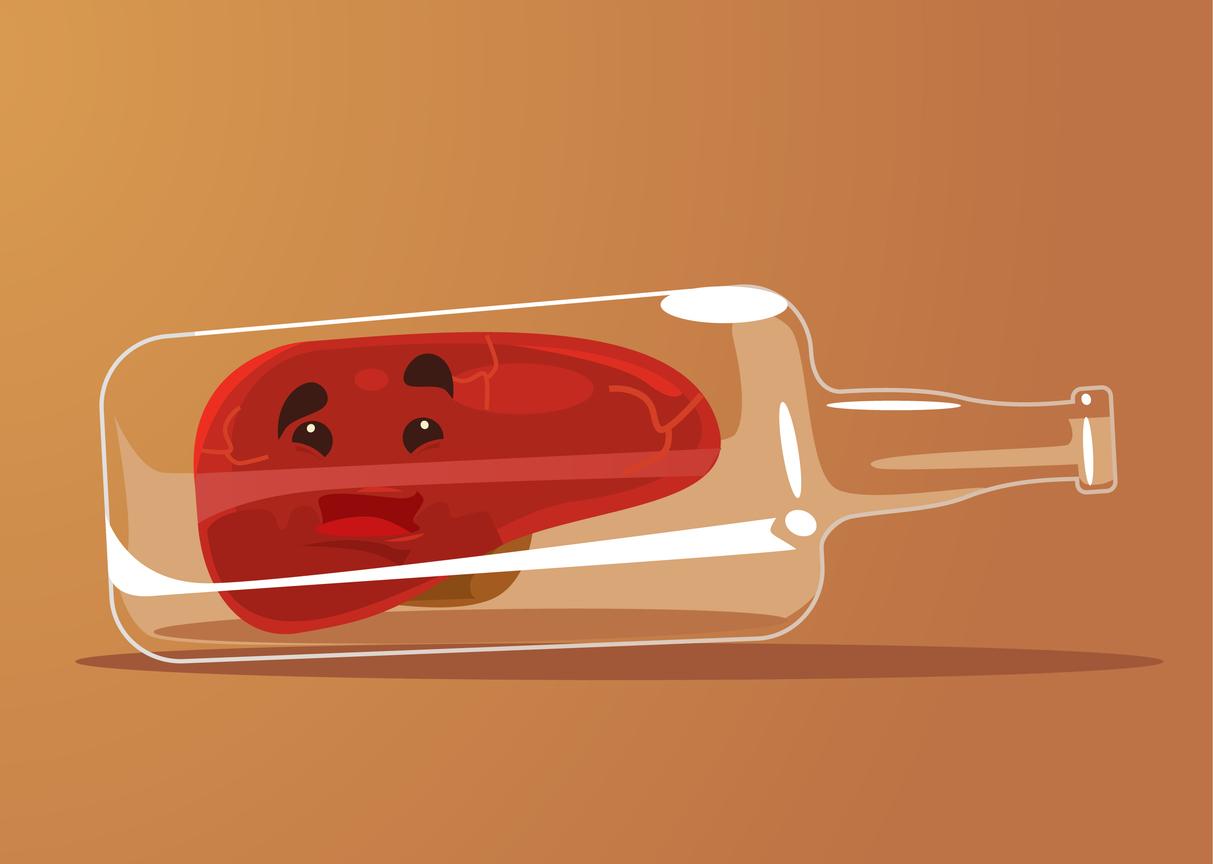Non-drinkers or occasional drinkers can also be prone to fatty liver disease. People who get drunk quickly are particularly at risk.

A drink in the evening, or even two, and you dance on the tables? Some people are particularly sensitive to alcohol, and get drunk very quickly. A peculiarity that prompted researchers at Kumamoto University, Japan, to study the prevalence of fatty liver disease (a foie gras) at her’s. And according to their results, published in the journal Nutrition & Diabetes, these people would be twice as likely to develop the disease as the general population.
To reach these conclusions, Japanese scientists studied the prevalence of fatty liver disease in 341 people who did not drink alcohol, and whose production of Aldehyde dehydrogenase 2 (ALDH2) was low or zero. The presence, or rather the absence, of this enzyme is linked to the ability to get drunk quickly.
When alcohol is drunk, it is converted into Acetaldehyde in the liver. It is a toxic compound, which is responsible for the direct symptoms of alcoholism, and hangovers. The role of ALDH2 is to transform it and eliminate it.
And we are not all equal when it comes to alcohol consumption: the genetic factor of the presence of the enzyme is decisive. Genotypes from East Asian countries are particularly disadvantaged. In Japan, where the study was carried out, 40% of the population has low ALDH2 levels, and even 10% of them have it completely.
NASH not just for overweight people
Light drinkers are therefore not excluded from the risks associated with fatty liver disease, which results in a significant presence of fat in the liver. However, in principle, it is associated either with heavy alcoholism, or alcoholism, or with obesity and associated pathologies (diabetes, hypertriglyceridemia). In the latter case, we speak of non-alcoholic fatty liver disease (NASH).
“It is important that light drinkers or abstainers also pay attention to the development of NASH,” said Kentaro Oniki of Kumamoto University. Even if you do not drink a lot, it is recommended to have your levels of γGTP tested (an indicator of liver damage: editor’s note) frequently “
NASHs are indeed often ignored due to the lack of symptoms associated with the disease, and are only detected at an advanced stage of liver inflammation, or even cirrhosis. Early identification, in people who were not previously considered to be at risk, could thus avoid complications.
.

















